|
Home | Session
5 | Features of SF Bay Pg 1, 2,
3
Features
of San Francisco Bay: From River Valley to Estuary
Presented
by Lise White
San Francisco State University
- San Francisco Bay Estuary
What processes have
controlled the evolution of S.F. Bay?
A. Regional plate tectonics
and geologic setting
San Francisco
Bay is a fault-bounded estuary, structurally controlled by the San
Andreas transform fault to the west and to the east by the Hayward
fault (figure 1, below left). The
Bay can be subdivided into the South Bay, Central Bay (including
the Golden Gate), San Pablo Bay in the north, and the Suisun Bay
to the east (see figure 2 , below center).
|
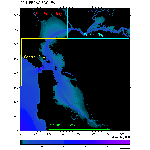
Figure 1 |

Figure 2 |
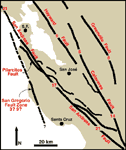
Figure 3 |
| Differences
in rates of slip along segments of the right lateral San Andreas
fault system that step to the right and left of the main trace of
the fault (figure 3, above right), result in complex compressional
and extensional forces that can result in structural highs (mountains)
and lows (basins). |
| The Bay
Block is a topographically low region (figure 4, below left). The
estuary's watershed (figure 5, below center)is large and it's river
systems drain approximately 40% of the surface area of the state.
Rivers and tributaries that start in the Sierra Nevada (figure 6,
below right) join the Sacramento and San Joaquin rivers and eventually
drain into the delta and San Francisco Bay. |
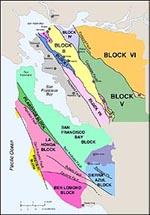
Figure 4 |
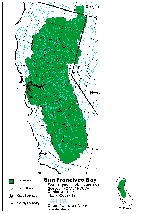
Figure 5 |
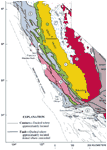
Figure 6 |
| This drainage
pattern has implications for the composition of the sediments that
accumulate in the Bay and reflects erosion of igneous source rocks
in the Sierra Nevada and sedimentary rocks of the Central Valley.
These sediments deposit along the tidal marshes and mudflats of
the Bay, and even and along the continental shelf where they are
shaped by wave and coastal processes. During the hydraulic mining
period that began around 1849 in the Sierra Nevada, mine tailings
accumulated downstream resulting shoaling of the bay for decades
after this. |
Top  Next Page
Next Page
|





